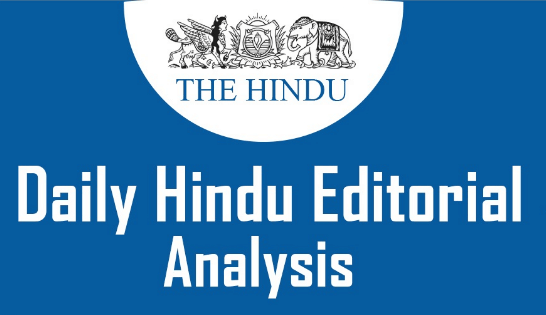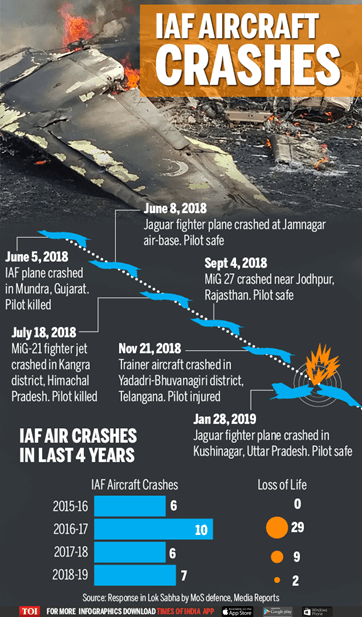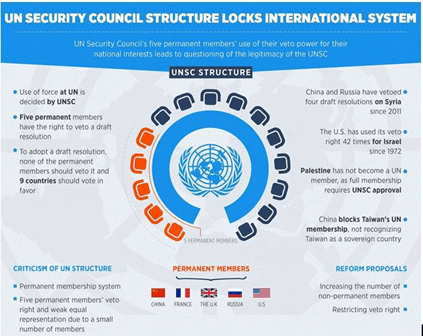10 August 2020: The Hindu Editorial Analysis | Additional Study Material for UPSC PDF Download
 1. Safety deficit: On Kozhikode aircrash-
1. Safety deficit: On Kozhikode aircrash-
GS 2- IMPORTANT ASPECTS OF GOVERNANCE, TRANSPARENCY AND ACCOUNTABILITY
CONTEXT:
(i) The tragic crash of an Air India Express ‘Vande Bharat’ relief flight in Kozhikode, in which people lost their lives is a forceful reminder that there are no acceptable risks in aviation.
(ii) Although an even bigger disaster was averted(prevented) by the absence of fire in the aircraft, the crash snuffed(took away) out the lives of many returning home from Dubai after a long.
(iii) Many Indians could not quickly return home from countries where they were employed, studying or travelling, although they desperately sought flights back home since March.
(iv) For those who took that long-awaited trip on August 7, it ended in disaster.
RISKY FLIGHT OPERATIONS:
(i) There are clear pointers to the dangerous nature of flight operations at Kozhikode airport in the midst of a strong monsoon.
(ii) Even with the availability of an instrument landing system for the “tabletop” runway carved into undulating(uneven) terrain, the accident took place.
(iii) There are problems with visibility, a far shorter safety area at the runway end than optimal.
(iv) There was absence of arrester systems that could stop an overshooting plane from falling off the edge, as it happened with this aircraft.
(v) Which of these factors, along with the monsoon impact, led to the disaster will become clear with a professional investigation.
(vi) The Civil Aviation Ministry should make a full disclosure on the technical evidence gathered, the integrity of which will be scrutinised by safety organisations worldwide.
LACK OF SAFETY MEASURES:
(i) Apparently anxious to project an image of normalcy, the Ministry allowed the airport to restart flights in a day, while the accident cause was yet to be ascertained(verified).
(ii) If rainy conditions existed during the landing, as Civil Aviation Minister Hardeep Singh Puri has said, these may persist during the rest of the monsoon.
Each flight must, therefore, be considered for a potential diversion to a safe airport nearby in bad weather.
(iii) Significantly, the admission by the DGCA that the key recommendation of runway extension at Kozhikode made almost a decade ago was not possible due to land acquisition(acquiring) issues.
(iv) Although the facility could still support wide-bodied aircraft, it strengthens the view that corners may have been cut on safety.
(v) The instance of an Air India Express plane suffering a tail strike in the same airport last year should have led to a full assessment, following up on the recommendations made after the 2010 crash in Mangaluru.
(vi) Since the visible cause of Friday’s crash was an overshoot, the runway continues to pose a threat.
(vii) Bad meteorological conditions such as rain and wind, and runway surface problems such as stagnation of water or rubber deposits that contribute to skidding endanger passengers and crew.
CONCLUSION:
(i) Every air safety incident diminishes(reduces) India’s reputation.
(ii) The Kozhikode crash should lead to a fresh review of all risky airports.
Transparent remedial action must be taken immediately.
(iii) The Kozhikode air crash shows that there can be no compromise on airport infrastructure.
2. Balancing priorities: On development and environment-
GS 2- IMPORTANT ASPECTS OF GOVERNANCE, TRANSPARENCY AND ACCOUNTABILITY
CONTEXT:
(i) This year, the annual floods that upend(destroy) the Brahmaputra Valley have been followed by intense(excess) spells along the Konkan coast and Mumbai, and now Kerala, which until the end of last month recorded a slight deficit.
(ii) The landslip in Idukki, that has so far claimed 43 lives and rendered several homeless, follows from a continuing spell of heavy rains in Kerala.
(iii) Most districts have received three or four times more rain than what is normal.
(iv) Last year too, neighbouring Wayanad saw multiple hamlets(small settlement) wiped out and the year before, the devastating floods in the State forced a debate on the need for new models of development.
LANDSLIDES:
(i) Landslips, or landslides, in the Western Ghats have a history.
(ii) Following the 2018 floods, data from the Geological Survey of India showed that Kerala had experienced 67 major landslide events and several minor ones from 1961-2013.
(iii) As part of a National Landslide Susceptibility Mapping (NLSM) programme, the agency mapped several States in the Western Ghats, North-eastern States, J&K and Uttarakhand to assess how vulnerable(weak) their districts were.
(iv) Nearly 13,000 square kilometres were mapped until 2018 and 6,000 were to be covered in 2019-20 in Kerala, according to the programme website.
(v) Nearly 13 of the State’s 14 districts were prone(likely) to landslides.
(vi) What made Kerala particularly vulnerable was the high population density of over 800 per square kilometre as compared to other States that also faced high landslide risk.
ZONING LAWS:
(i) The objective of the NLSM maps is to help State and district authorities incorporate(add) the risk of landslides into zoning laws.
(ii) However, just as in the case of earthquake zonation maps, or for that matter, any exercise to scientifically ascertain the risk from natural hazards to a region, these laws are barely implemented in the right spirit.
(iii) And this is not unique to Kerala. The details might vary but it is now beyond contestation that India is living in a new climate normal.
(iv) Frequent high intensity bursts of rain will co-exist along with long dry spells.
(v) It has emerged from studies of Kerala’s topography that quarrying(cutting rocks) and the unscientific cutting of slopes into hills aggravates(increases) the risk of soil erosion.
(vi) Operationalising the State’s disaster management apparatus and allocating funds for preparedness are key policy responses, but Kerala also must double down on enforcing regulations and observing zoning laws as well as ensuring that slopes carved into hilly terrain have adequate provisions for draining water.
(vii) A lack of compliance with such principles is often a key reason why natural hazards end up causing a significant number of avoidable casualties.
CONCLUSION:
(i) There is a cost to pursuing(following) development goals without paying attention to environmental constraints.
(ii) Development goals must be pursued without breaching(violating) environment regulations.
(iii) Forecasts of ‘good’ or ‘normal’ monsoons are often beguiling(charming in deceptive way) and belie(contradict) the ominous(threat).
3. A new direction for India-U.S. ties- Subramanyam Swamy-
GS 2- BILATERAL AGREEMENTS INVOLVING INDIA AND/OR AFFECTING INDIA’S INTERESTS
CONTEXT:
(i) The US under the leadership of President F. D. Roosevelt during the early 1940s once pressed Britain’s Prime Minister Winston Churchill to free India and co-opt India as a formal ally(supporter) in World War II.
(ii) But Britain firmly and obstinately(wilful) refused to agree despite the writing on the wall — that Indians had stood up and would achieve freedom sooner rather than later.
(iii) India stabilised after a bloody(blood-shed) Partition in 1947, declared its commitment to democracy, fundamental rights, free press and non-violence in a written Constitution.
THE UN AND CHINA:
(i) India thus appeared to the U.S. as worthy of replacing China in the most important Security Council, as a Permanent Member with a Veto.
(ii) According to a recent study by Dr. Anton Harder, the author states that the U.S.’s offer for India to join the UNSC was conveyed by India’s Ambassador to the U.S. then, viz., Ms. Vijaya Lakshmi Pandit, Nehru’s sister.
(iii) Nehru’s response was unequivocal(not confusing):
(iv) ‘So far as we are concerned, we are not going to countenance(support) it. (v) That would be bad from every point of view.
(vi) It would be a clear affront(attack) to China and it would mean some kind of a break between us and China.
(vii) ‘We shall go on pressing for China’s admission in the UN and the Security Council.
(viii) India because of many factors, is certainly entitled to a permanent seat in the security council. But we are not going to at the cost of China’.
(ix) Nehru not only declined the U.S. offer to India to become a UNSC Permanent Member with Veto but instead campaigned for China to take up that seat.
(x) The U.S. however resisted that campaign till 1972, when in a turnaround the U.S. supported Communist People’s Republic of China and entered into “strategic partnership” in the 1970s onwards with the reform-minded new leadership of Deng Xiaoping.
(xi) Subsequently what China did to Nehru for this generosity at India’s expense is history from which we must learn.
THE SHIFT TO PAKISTAN:
(i) In 1953 after India’s tilt to the Soviet Union and China in the Korean war, the U.S. turned to Pakistan as a possible counterweight in South Asia against the Soviet Union and China.
(ii) The U.S. made Pakistan a member of the Southeast Asia Treaty Organization (SEATO) and the Central Treaty Organization (CENTO), and liberally gave aid and armaments.
(iii) Pakistan which was no match in military, economic development, and ancient and continuous culture that ensured democracy, began to dream of equality with India in the international domain.
(iv) As a consequence, India had to go to war with Pakistan in 1965, 1971 and 1999, losing precious lives defending our own territory.
(v) The U.S. even sent a Seventh Fleet Task Force with nuclear weapons on board to threaten us on the dismemberment(breaking) of Pakistan during Bangladesh Liberation War in 1971.
(vi) The rest is history. We have to learn from our past mistakes.
Today there is a new opportunity with the U.S. but it is not on a clean slate.
AMERICA’S NOVEMBER POLL:
(i) The success of our new bonding with the U.S. will first depend on the outcome of the U.S. Presidential elections this November.
(ii) The Democratic party rival and Presidential candidate, Joe Biden, has already taken a hostile(aggression) stand against our government.
(iii) With the Left wing and liberals in the U.S. highly critical of the BJP government, such as rubbishing the Citizenship (Amendment) Act passed by India’s Parliament with a two-thirds majority.
(iv) In inner U.S. circles our purchase from Russia of the S-400 air defence missile system and the refusal to agree to America’s request to send Indian troops to Afghanistan have mostly browned off(annoyed) U.S. officials.
(v) U.S. policy makers know Indians love atmospherics and melas, but not substantive issues which concern the U.S.
(vi) Therefore, we need to build trust with the U.S. that we will give to the U.S. as good as it gives us, and not give us lectures instead. The U.S. will then respond more than what we concede.
(vii) In 1991 when then PM Chandra Shekhar told me to find out if we can get a policy-conditions free loan at a concessional interest rate from the International Monetary Fund (IMF).
(viii) I told him that the IMF would never agree, but since a large size of the voting power in the IMF was directly or indirectly controlled by the U.S., we should placate(satisfy) the U.S.
(ix) Thereafter, PM Shekhar spoke to the U.S. that India would agree to a pending American request with the PM’s Office for permission to refuel their air force planes flying from the Philippines to Saudi Arabia for the first Gulf War when Iraq occupied Kuwait.
(x) I thereafter told the U.S. Ambassador in New Delhi about this but I said it was conditional on getting $2 billion (1991 prices). Over the weekend that loan arrived and India was saved from a default.
IN SYNCHRONY:
(i) Today, thus, the new or fresh paradigm should be on how to structure India-U.S. understanding and which is in sync with common India-U.S. perspectives.
(ii) For this structuring we must: first realise that India-U.S. relations require give and take on both sides.
(iii) What India needs to take today is for dealing with the Ladakh confrontation on our side of the Line of Actual Control by China.
(iv) Obviously, India needs U.S. hardware military equipment. India does not need U.S. troops to fight our battles against China on our border.
(v) Third, the U.S. needs India to fight her enemies in the neighbourhood such as in Afghanistan.
(vi) It is my view that India should send two divisions gradually to Afghanistan and relieve U.S. troops to go home.
(vii) India needs the support of the U.S. and its ally, Israel, in cyberwarfare, satellite mappings of China and Pakistan, intercepts of electronic communication, hard intelligence on terrorists, and controlling the military and the Inter-Services Intelligence in Pakistan.
(viii) India needs the U.S. to completely develop the Andaman & Nicobar, and also the Lakshadweep Islands as a naval and air force base, which the U.S. can share along with its allies such as Indonesia and Japan.
(ix) India must be firm in two areas which are not amenable(compliant) to give and take. One is that economic relations must be based on macroeconomic commercial principles.
(x) Free, indiscriminate flow of U.S. foreign direct investment (FDI) is not in India’s national interest.
LOOK AT TECHNOLOGIES:
(i) Thus, India needs technologies such as thorium utilisation, desalination of sea water, and hydrogen fuel cells, but not Walmart.
(ii) India needs U.S. universities to start campuses in India, as proposed in the new National Education Policy draft.
(iii) Eighth, the U.S. must allow India’s exports of agricultural products including Bos indicus milk, which are of highly competitive prices in the world.
(iv) FDI should be allowed into India selectively from abroad, including from the U.S., based on the economic theory of comparative advantage and not on subsidies and gratis.
(v) Tenth, tariffs of both India and the U.S. should be lowered, and the Indian rupee should be gradually revalued to ₹35 to a dollar.
(vi) Later, with the economy picking up, the rupee rate should go below 10 to the dollar.
(vii) The other firm constraint is that India should not provide the U.S. with our troops to enter Tibet, or be involved in the Hong Kong and Taiwan issues because there is always a possibility of a leadership change in China.
(viii) In the cases of Tibet, Taiwan, and Hong Kong, we have made explicit agreements. In the case of Tibet, two formal treaties were signed by Nehru (1954) and A.B. Vajpayee (2003).
(ix) In the last point, in the long run, India, the U.S., and China should form a trilateral commitment for world peace provided Chinese current international policies undergo a healthy change.
|
21 videos|562 docs|160 tests
|
FAQs on 10 August 2020: The Hindu Editorial Analysis - Additional Study Material for UPSC
| 1. What is the significance of The Hindu Editorial Analysis for UPSC exam preparation? |  |
| 2. How can The Hindu Editorial Analysis help in improving language skills for the UPSC exam? |  |
| 3. Is The Hindu Editorial Analysis only useful for the English comprehension section of the UPSC exam? |  |
| 4. How can one effectively utilize The Hindu Editorial Analysis for UPSC exam preparation? |  |
| 5. Are there any alternative sources for editorial analysis that can be used alongside The Hindu for UPSC exam preparation? |  |
















